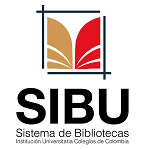SIBU - SISTEMAS DE BIBLIOTECAS UNICOC
Vector Mechanics for Engineers : Dynamics
por Beer, Ferdinand P ; Johnston, E. Russell
; Johnston, E. Russell ; Cornwell, Phillip J
; Cornwell, Phillip J ; Self, Brian P
; Self, Brian P .
.
Editor: New York McGraw hill 2019Edición: 12 ed.Descripción: 1416 páginas.ISBN: 9781260092745; 9781260289695.Tema(s): Mecánica aplicada| Tipo de ítem | Ubicación | Colección | Signatura topográfica | Número de copia | Estado | Fecha de vencimiento | Código de barras | Reserva de ejemplares |
|---|---|---|---|---|---|---|---|---|
 Libro Libro |
Bogotá (Dr. David Ordóñez Rueda) - Campus Norte
Segundo piso
Campus Norte Biblioteca de la Institución Universitaria Colegios de Colombia |
Colección General | 620.104 B415d 2019 (Navegar estantería) | Ej. 1 | Disponible | 23315 |
Navegando Bogotá (Dr. David Ordóñez Rueda) - Campus Norte Estantes , Ubicación: Segundo piso Cerrar el navegador de estanterías
| 620.103 B415s 2019 Vector Mechanics for Engineers | 620.103 G1 2015 Estática | 620.104 B415d 2017 Mecánica vectorial para ingenieros | 620.104 B415d 2019 Vector Mechanics for Engineers | 620.11 A834 2017 Ciencia e ingeniería de materiales | 620.11 B415m 2017 Mecánica de materiales | 620.11 C162 2016 Ciencia e ingeniería de materiales |
Cover
Halftitle
Title
Copyright
About the Authors
Brief Contents
Contents
Preface
Guided Tour
Digital Resources
Acknowledgments
List of Symbols
Vector Mechanics For Engineers: Dynamics
11 Kinematics of Particles
11.1 Rectilinear Motion of Particles
11.2 Special Cases and Relative Motion
*11.3 Graphical Solutions
11.4 Curvilinear Motion of Particles
11.5 Non-Rectangular Components
Review and Summary
Review Problems
12 Kinetics of Particles: Newton’s Second Law
12.1 Newton’s Second Law and Linear Momentum
12.2 Angular Momentum and Orbital Motion
*12.3 Applications of Central-Force Motion
Review and Summary
Review Problems
13 Kinetics of Particles: Energy and Momentum Methods
13.1 Work and Energy
13.2 Conservation of Energy
13.3 Impulse and Momentum
13.4 Impacts
Review and Summary
Review Problems
14 Systems of Particles
14.1 Applying Newton’s Second Law and Momentum Principles to Systems of Particles
14.2 Energy and Momentum Methods for a System of Particles
*14.3 Variable Systems of Particles
Review and Summary
Review Problems
15 Kinematics of Rigid Bodies
15.1 Translation and Fixed-Axis Rotation
15.2 General Plane Motion: Velocity
15.3 Instantaneous Center of Rotation
15.4 General Plane Motion: Acceleration
15.5 Analyzing Motion with Respect to a Rotating Frame
*15.6 Motion of a Rigid Body in Space
*15.7 Motion Relative to a Moving Reference Frame
Review and Summary
Review Problems
16 Plane Motion of Rigid Bodies: Forces and Accelerations
16.1 Kinetics of a Rigid Body
16.2 Constrained Plane Motion
Review and Summary
Review Problems
17 Plane Motion of Rigid Bodies: Energy and Momentum Methods
17.1 Energy Methods for a Rigid Body
17.2 Momentum Methods for a Rigid Body
17.3 Eccentric Impact
Review and Summary
Review Problems
18 Kinetics of Rigid Bodies in Three Dimensions
18.1 Energy and Momentum of a Rigid Body
*18.2 Motion of a Rigid Body in Three Dimensions
*18.3 Motion of a Gyroscope
Review and Summary
Review Problems
19 Mechanical Vibrations
19.1 Vibrations without Damping
19.2 Free Vibrations of Rigid Bodies
19.3 Applying the Principle of Conservation of Energy
19.4 Forced Vibrations
19.5 Damped Vibrations
Review and Summary
Review Problems
Appendix A: Some Useful Definitions and Properties of Vector Algebra
Appendix B: Mass Moment of Inertia
Appendix C: Fundamentals of Engineering Examination
Appendix D: SI Unit References
Answers to Problems
Index
Properties of Geometric Shapes
11. Vector Mechanics For Engineers: Dynamics
12. Kinetics of Particles: Newton’s Second Law 13. Kinetics of Particles: Energy and Momentum Methods
14. Systems of Particles
15. Kinematics of Rigid Bodies
16. Plane Motion of Rigid Bodies: Forces and Accelerations
17. Plane Motion of Rigid Bodies: Energy and Momentum Methods
18. Kinetics of Rigid Bodies in Three Dimensions
19. Mechanical Vibrations
A primary objective in a first course in mechanics is to help develop a student's ability first to analyze problems in a simple and logical manner, and then to apply basic principles to their solutions. A strong conceptual understanding of these basic mechanics principles is essential for successfully solving mechanics problems. This edition of Vector Mechanics for Engineers will help instructors achieve these goals. Continuing in the spirit of its successful previous editions, this edition provides conceptually accurate and thorough coverage together with a significant refreshment of the exercise sets and online delivery of homework problems to your students. The 12th edition has new case studies and enhancements in the text and in Connect. The hallmark of the Beer-Johnston series has been the problem sets.This edition is no different. Over 650 of the homework problems in the text are new or revised. One of the characteristics of the approach used in this book is that mechanics of particles is clearly separated from the mechanics of rigid bodies. This approach makes it possible to consider simple practical applications at an early stage and to postpone the introduction of the more difficult concepts. Additionally, Connect has over 100 Free-Body Diagram Tool Problems and Process-Oriented Problems. McGraw-Hill's Connect, is also available. Connect is the only integrated learning system that empowers students by continuously adapting to deliver precisely what they need, when they need it, how they need it, so that class time is more effective. Connect allows the professor to assign homework, quizzes, and tests easily and automatically grades and records the scores of the student's work. Problems are randomized to prevent sharing of answers an may also have a "multi-step solution" which helps move the students' learning along if they experience difficulty.
Unicoc
Ingles
© 2014 UNICOC | Institución Universitaria Colegios de Colombia - UNICOC
Bogotá D.C. Autopista Norte Km. 20. Teléfono:(571)6683535
Cali: Calle 13 Norte No. 3N-13. Teléfono: (572)6608887




